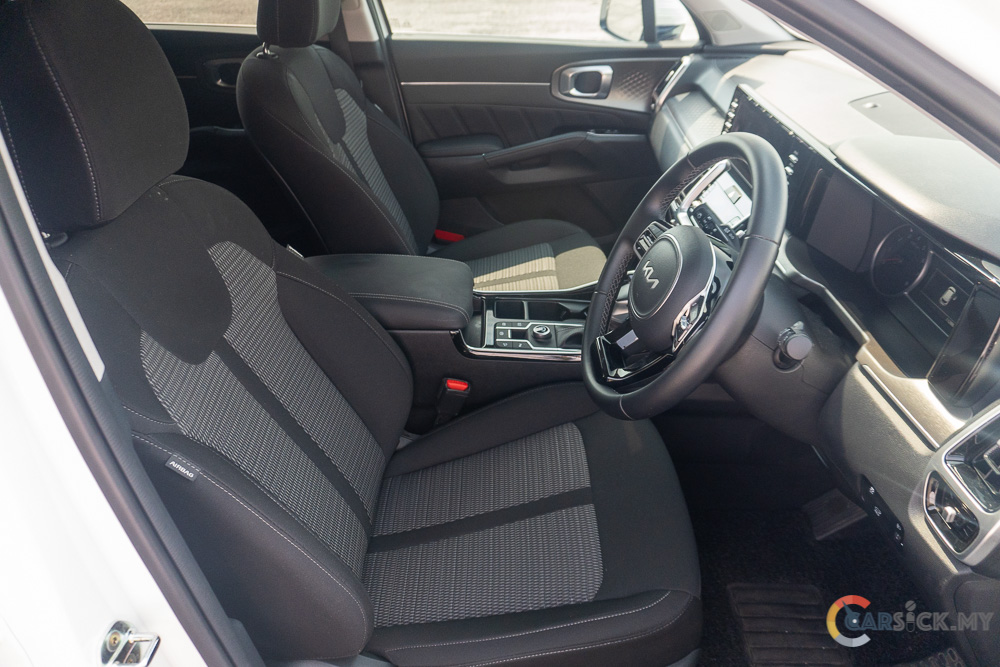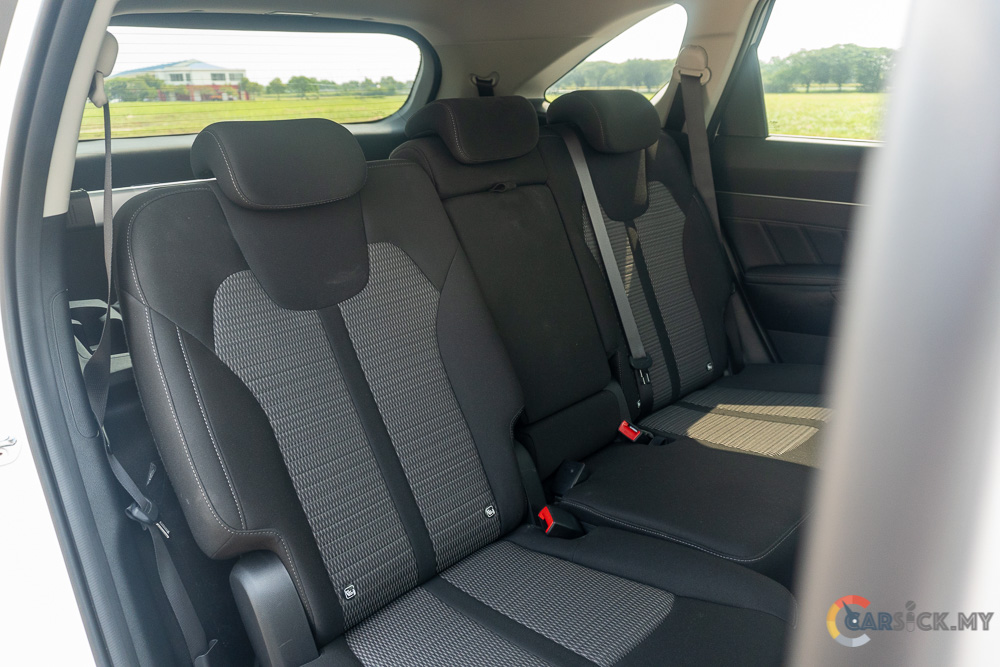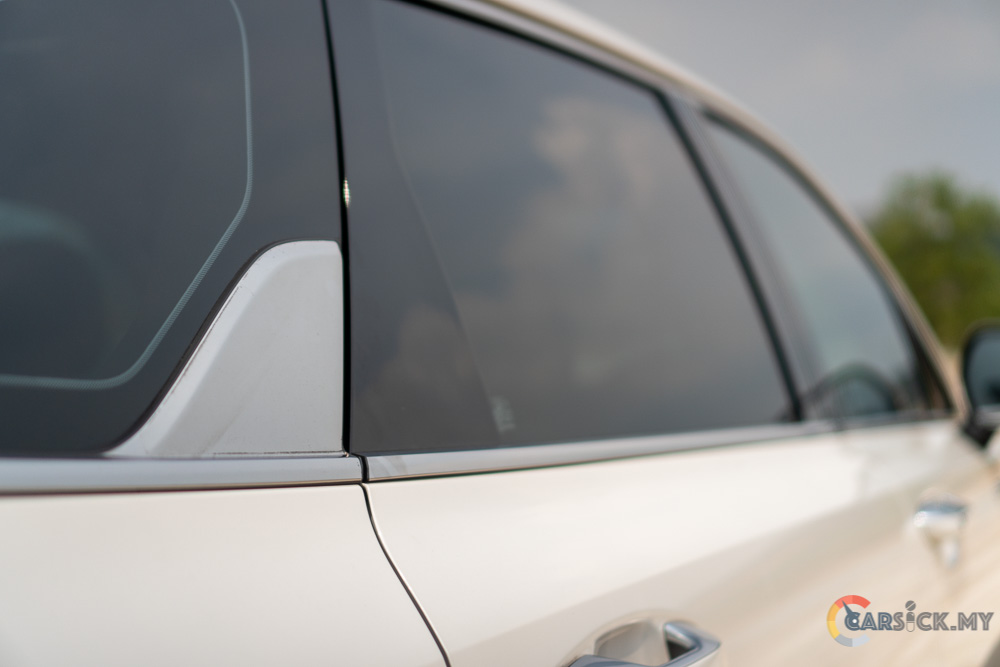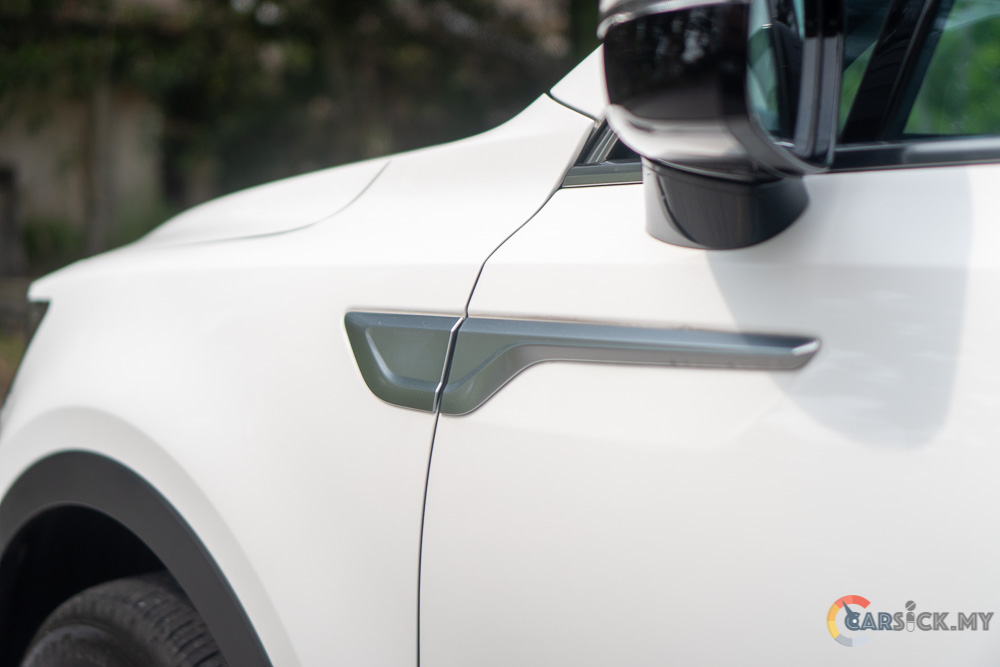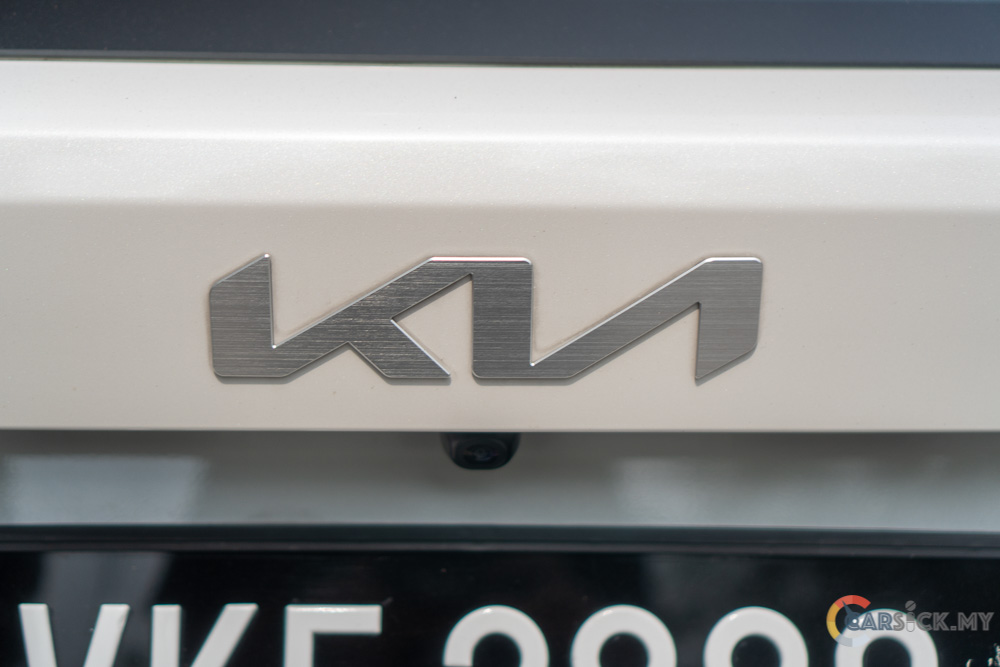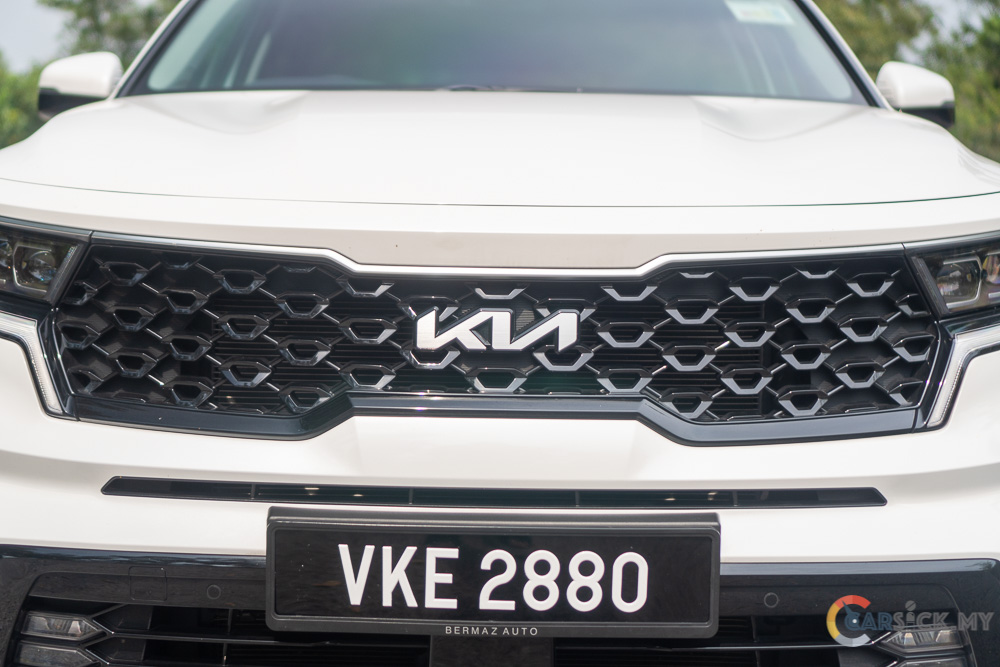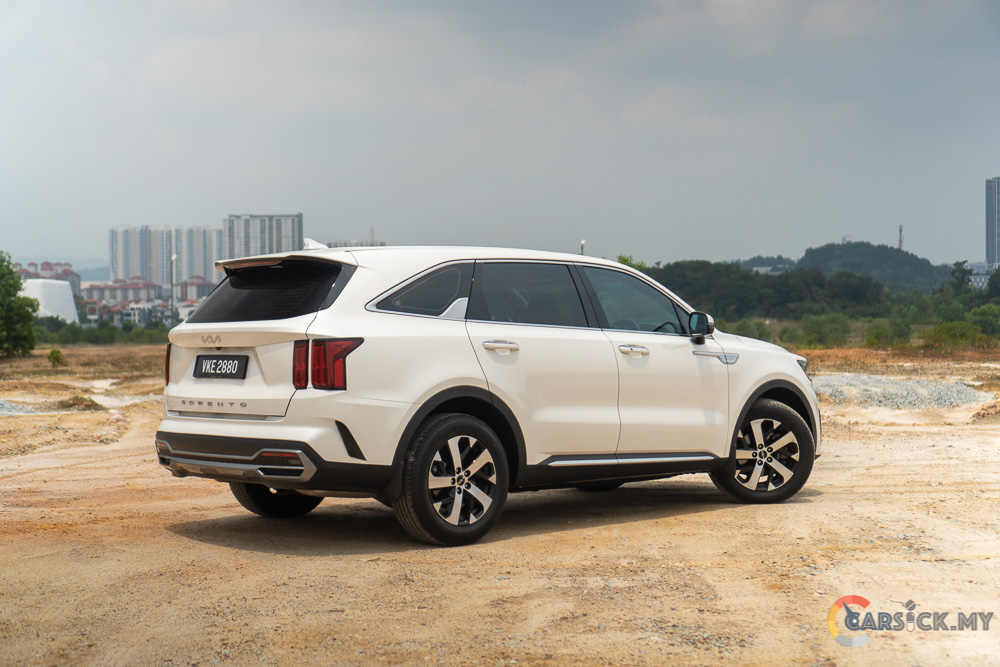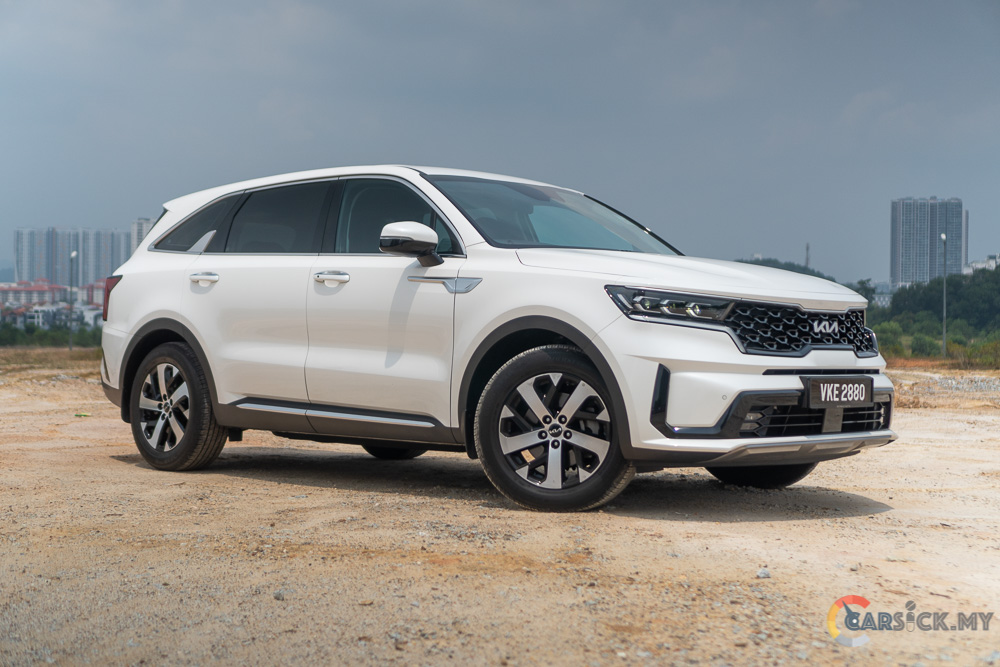During the Naza era, Naza Kia achieved notable success in Malaysia with the sale of the Kia Sorento, one of their top-selling models. Serving as Kia’s full-size SUV, the Kia Sorento accommodates up to seven passengers. Under the new management, the latest iteration of the Kia Sorento has been introduced, albeit with a significant increase in price. This current generation of the Kia Sorento is offered in three distinct variants. In this review, I will closely evaluate the entry-level Kia Sorento to determine if Bermaz has effectively enhanced the vehicle’s specifications.
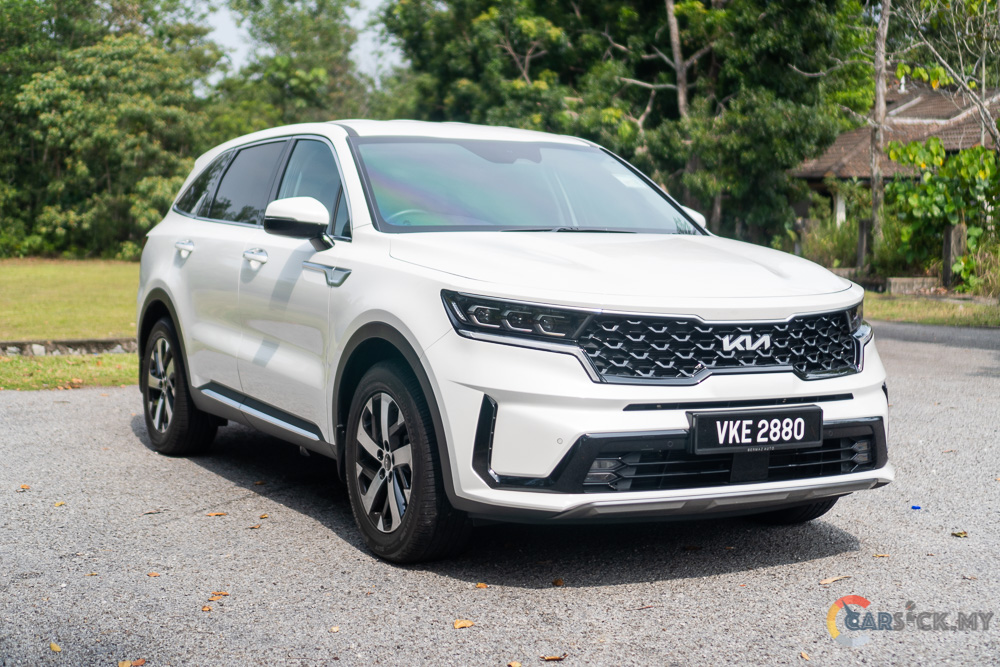
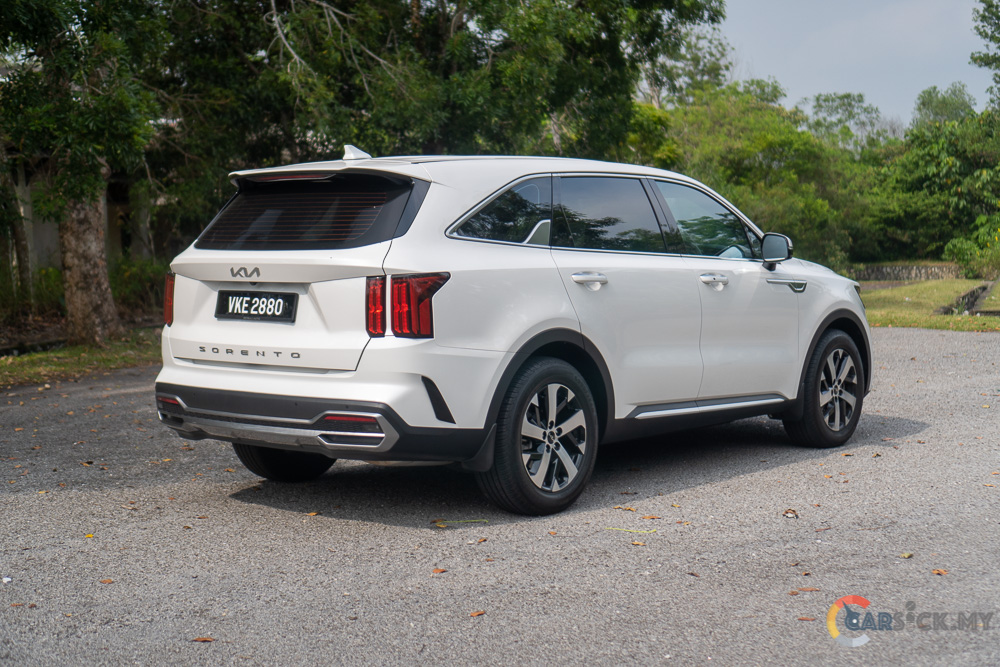 The redesigned Sorento stands out as a significantly more attractive SUV than its predecessor. Boasting a contemporary styling, it exudes enhanced handsomeness and style. The adoption of a more angular look imparts a distinctly masculine character to the vehicle. Remaining true to Kia’s signature design, the Sorento features a sizable front grille, known as the tiger nose, seamlessly blending with sharp headlights that offer excellent nighttime illumination. Additionally, the front bumper complements the overall aesthetics, incorporating four hexagonal footlights.
The redesigned Sorento stands out as a significantly more attractive SUV than its predecessor. Boasting a contemporary styling, it exudes enhanced handsomeness and style. The adoption of a more angular look imparts a distinctly masculine character to the vehicle. Remaining true to Kia’s signature design, the Sorento features a sizable front grille, known as the tiger nose, seamlessly blending with sharp headlights that offer excellent nighttime illumination. Additionally, the front bumper complements the overall aesthetics, incorporating four hexagonal footlights. 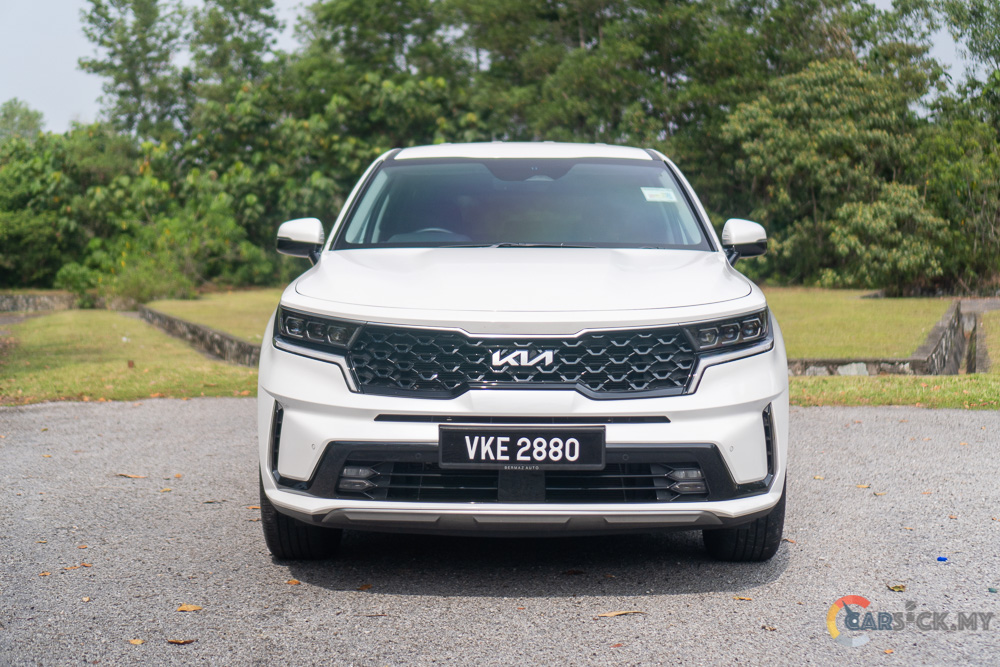
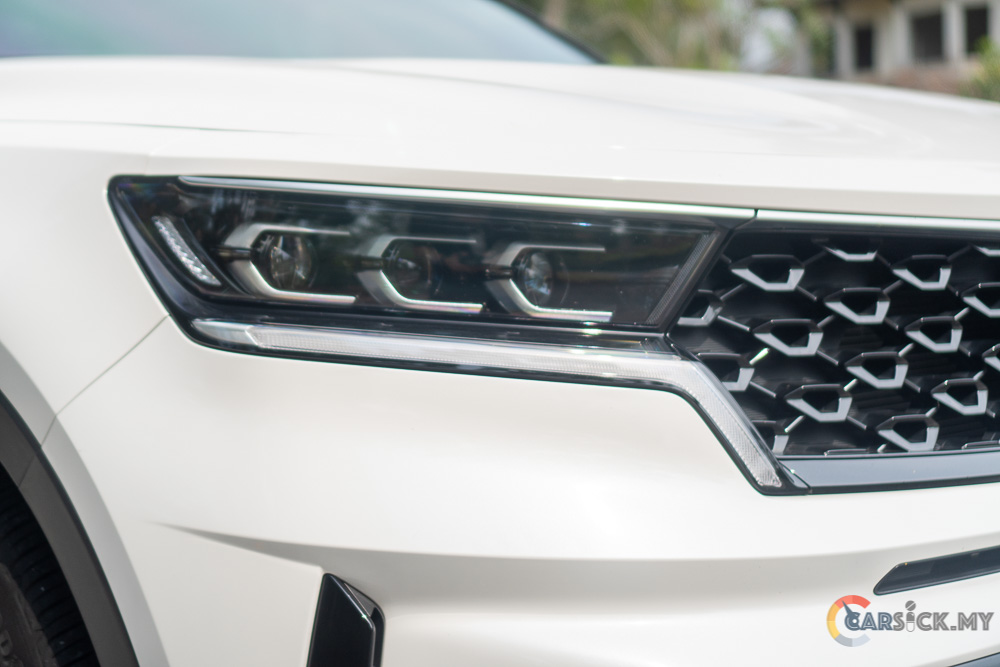
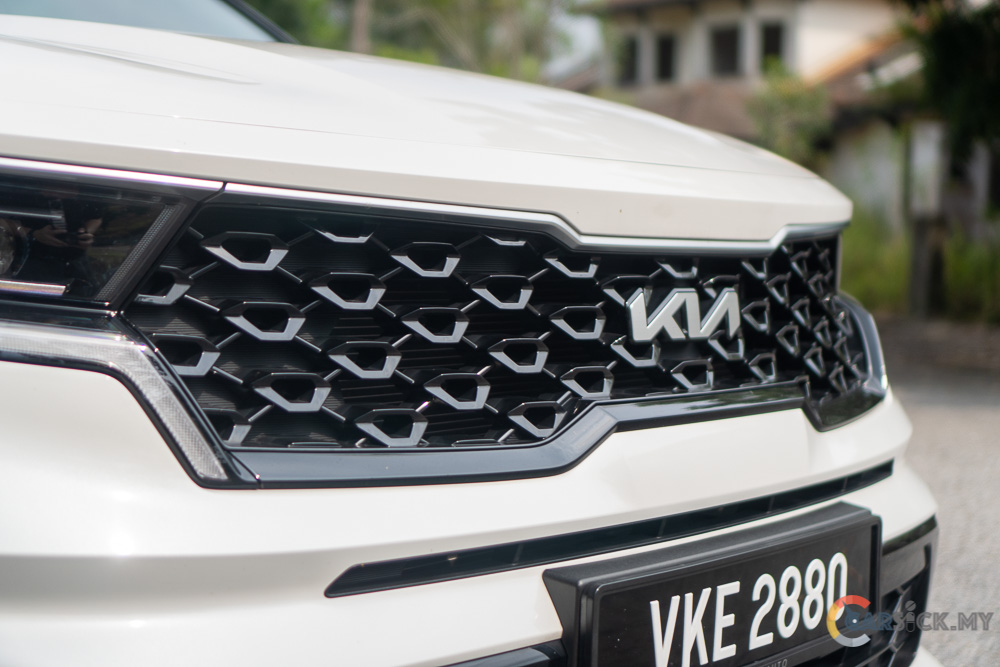
Moving to the rear, the Sorento’s tail lights evoke a sense of elegance reminiscent of the Rolls Royce Cullinan. This unique arrangement distinguishes the SUV from most others, as manufacturers typically do not arrange their tail lights in this fashion. While the Sorento’s tailgate may appear conventional, the placement of the boot opening is somewhat unconventional, situated at the lower part of the tailgate rather than the typical number plate area. This departure might require a brief search for those unfamiliar with the design. To complete its overall appeal, the Sorento is equipped with a set of 18-inch rims wrapped in 235/60 R18 tires, adding a stylish finishing touch to the vehicle. The rims enhance the Sorento’s visual appeal, contributing to an overall aesthetic that is quite pleasing. 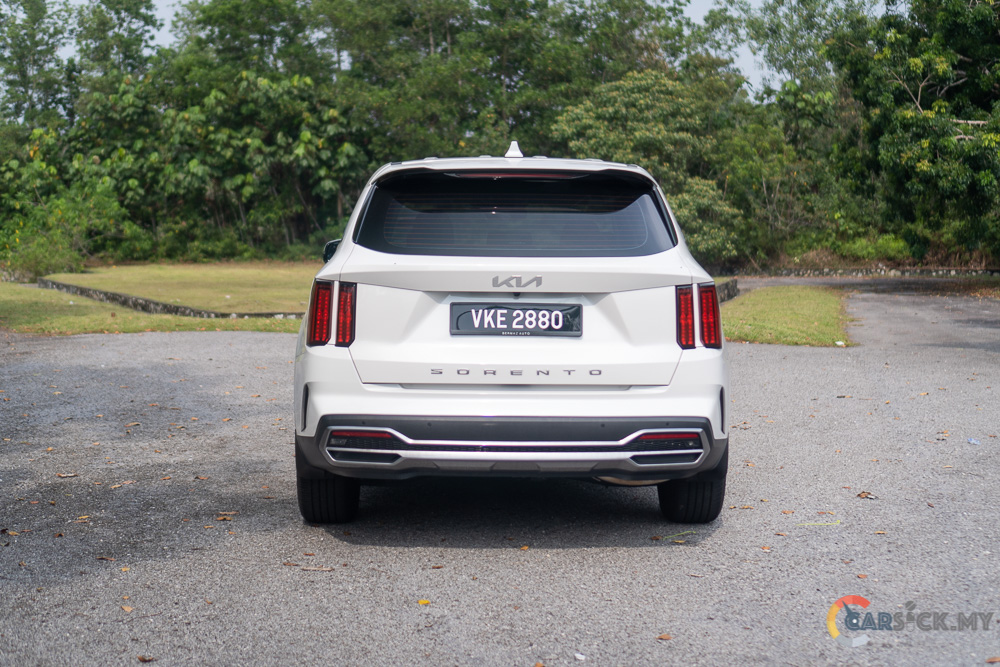

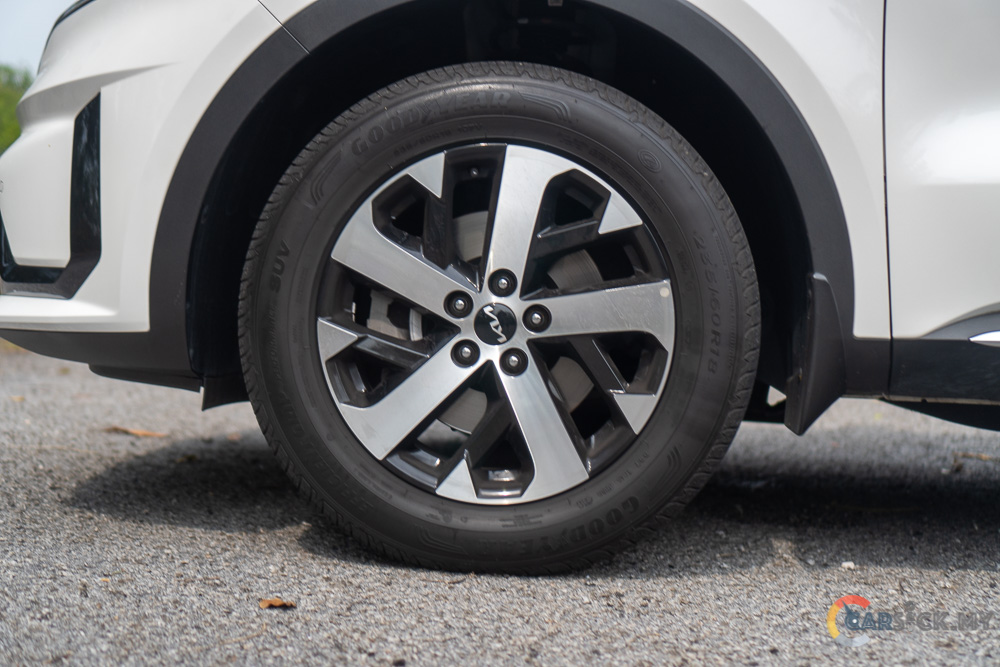
Upon entering the Sorento, my immediate observation is the intricate design of the dashboard. Personally, I appreciate the complexity of this layout over the more streamlined alternatives, as it imparts a rugged feel. Comprising various angles, the dashboard adds a touch of style to the cabin, and the AC vents mirror its design, featuring upper and lower sections that enable occupants to direct airflow precisely. Despite the extensive use of solid materials, particularly hard plastic on the lower part of the dashboard, the fit and finish are commendable.
In terms of color, black dominates the interior, but silver trims strategically placed throughout provide a subtle contrast. What pleasantly surprises me is that even in the base model Sorento, ambient lighting is present, albeit confined to the front area. Despite the dashboard’s busy appearance, the familiarity of the infotainment systems and instrument cluster is comforting, aligning with the experience of any Kia enthusiast.
The instrument cluster in this base Sorento includes an analogue speedometer and tachometer, complemented by a 4.2-inch multi-info display. While straightforward and easy to navigate due to its familiar setup, the adjacent 10.25-inch infotainment screen supports Android Auto and Apple CarPlay but operates on wired connections rather than wireless. Kia’s decision to keep climate controls separate from the infotainment screen, though somewhat dated in appearance, is appreciated. 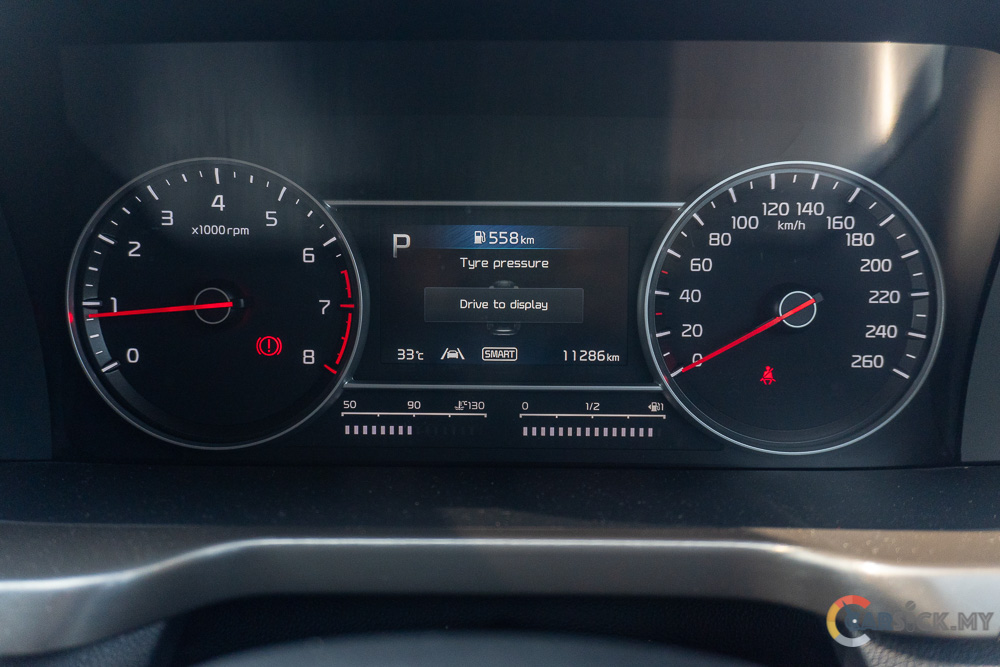
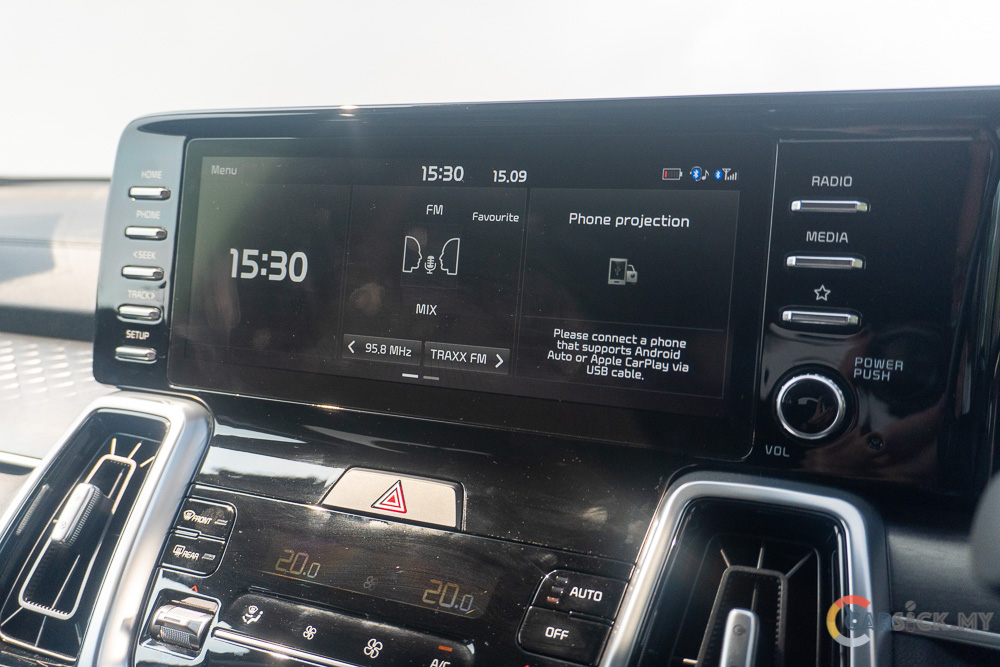
In the audio department, the base variant sacrifices the Bose premium audio system found in its pricier counterparts. Nevertheless, the 6-speaker sound system provides satisfactory audio quality. The infotainment system includes a reverse camera, sufficient for parking the sizable vehicle, although a 360-degree camera would enhance the overall experience.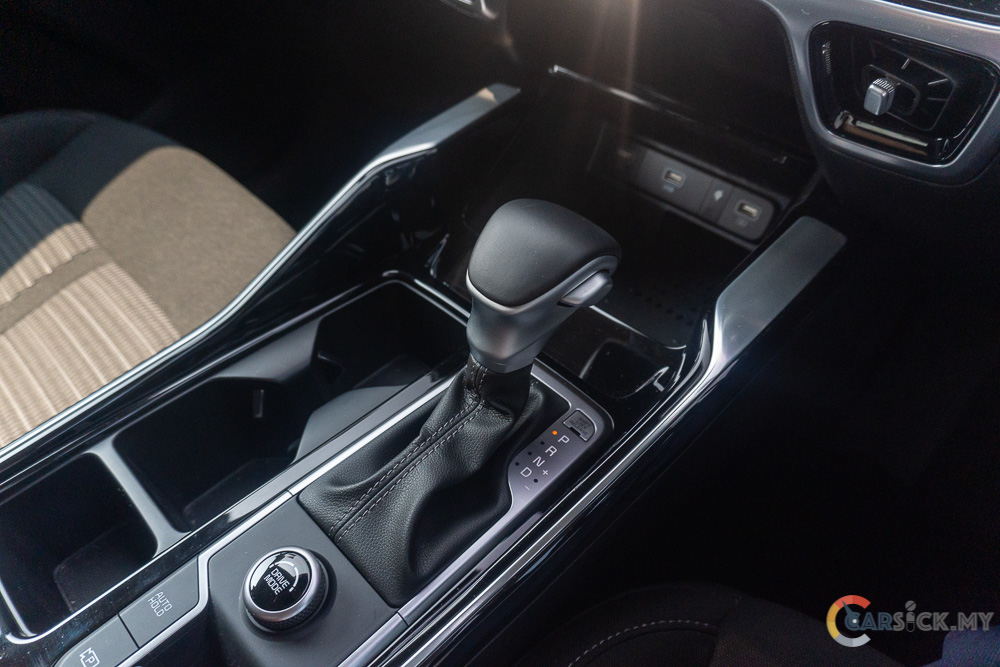
Turning attention to the seats, the cloth-wrapped seats in this Sorento variant, while still comfortable, diminish the premium ambiance inside the cabin. The ergonomic driving position, characterized by a tall seating stance and easily accessible buttons and switches, adds to the overall driving experience.
In the second row, passengers enjoy a spacious and comfortable area, with supportive seats and ample legroom and headroom. The second-row seats can recline and slide, facilitating adjustments for both comfort and access to the third row.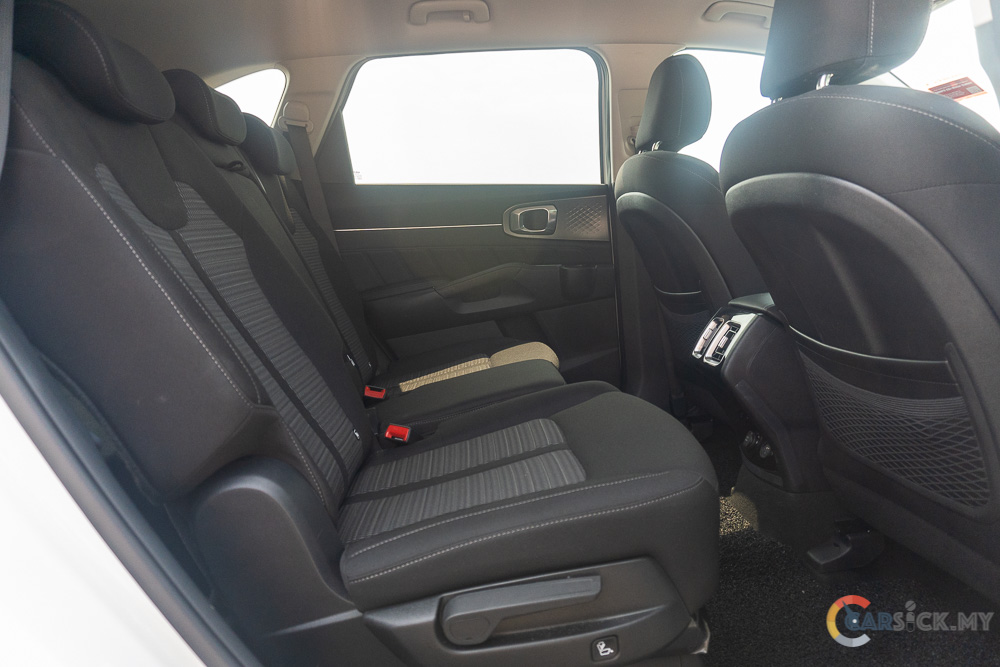
However, the third-row seats are less accommodating for adults on longer journeys, requiring a somewhat uncomfortable squatting position due to limited legroom. Although the second-row seats can be adjusted to create more space, the elevated floor for the third row remains a hindrance. On a positive note, third-row passengers have their own AC vents and USB-A slot to enhance comfort.
Examining the boot, the Sorento boasts a versatile space. Similar to the Carnival, it features a hands-free tailgate opening for added convenience. With all seats up, the Sorento provides a compact boot suitable for soft bags. Most owners opt to fold the third-row seats, unlocking an impressive 616 liters of boot space. For those requiring additional room for longer items, the second-row seats can be easily folded down with the press of two buttons inside the boot. 
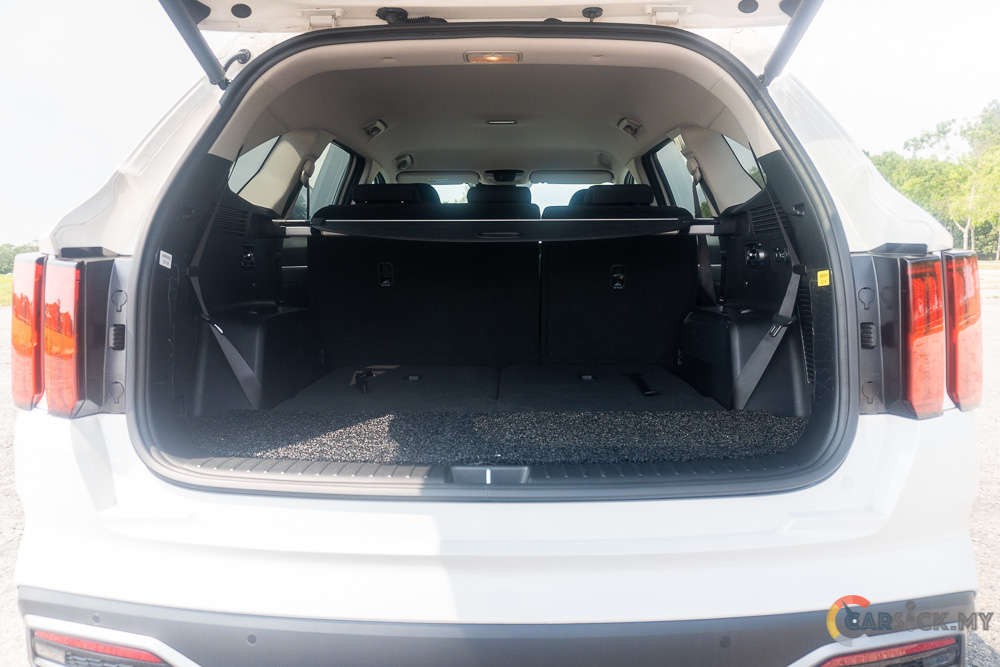
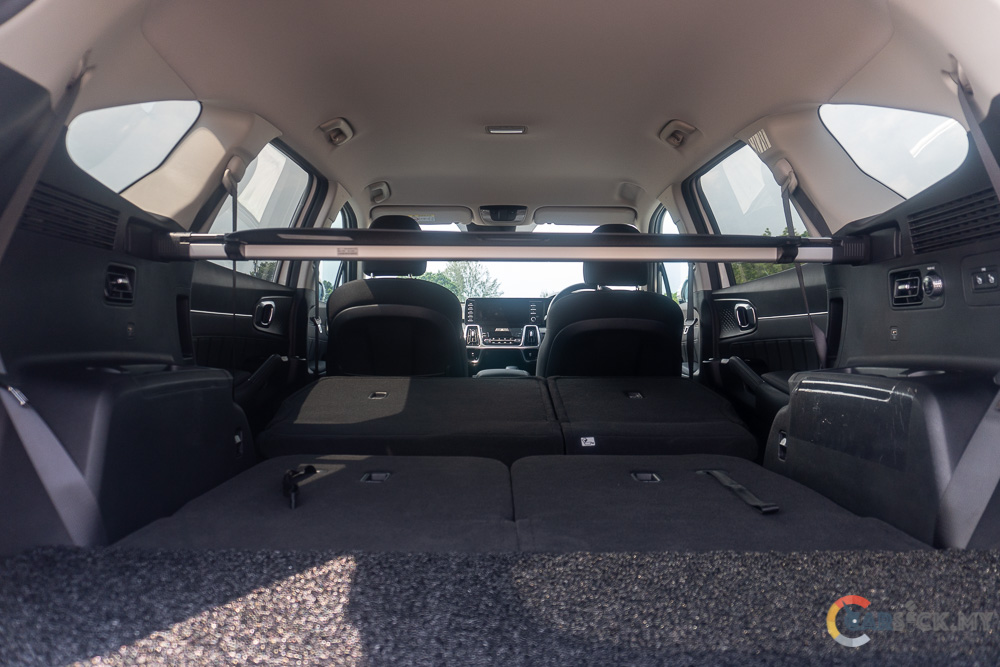
Turning our attention to the powertrain, the entry-level Kia Sorento is equipped with a 2.5L 4-cylinder naturally aspirated engine paired with a 6-speed automatic transmission. This engine-transmission duo has been the driving force behind the Sorento for a considerable period. It exclusively channels power to the front wheels, designating the vehicle as a front-wheel-drive model. Capable of generating 177 hp at 6,000 rpm and delivering 232 Nm of peak torque at 4,000 rpm, this powertrain offers a tried-and-true performance. 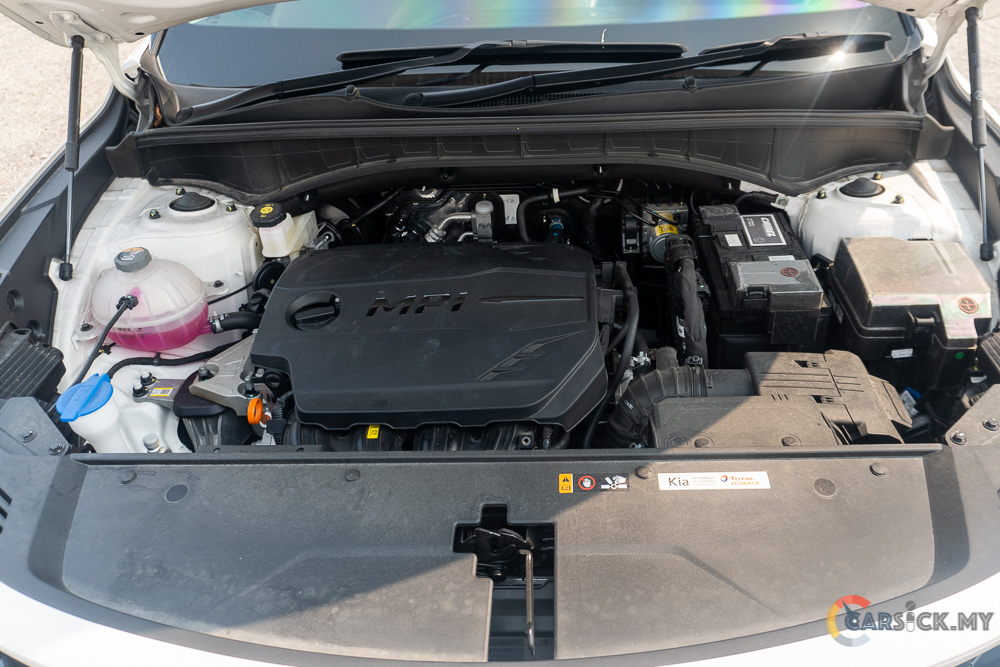

While the 2.5L engine provides sufficient power to propel the SUV forward, it exhibits a lack of robust low-end torque. Consequently, the transmission frequently downshifts with a slight increase in pressure on the throttle pedal, a phenomenon particularly noticeable when ascending inclines. Personally, I find the diesel powertrain more appealing than its petrol counterpart, but that discussion is reserved for a different review on another occasion. Opting for the petrol engine is advisable if you prefer to steer clear of diesel clatter.
While navigating bumps and uneven terrain, I’ve noticed that the SUV excels in absorbing road imperfections, thanks to its comfort-based suspension. The Sorento’s soft suspension becomes evident in cornering, as there’s noticeable body roll. However, when cruising at highway speeds, the Sorento feels remarkably stable and comfortable. The direct steering wheel, coupled with the soft suspension, provides sufficient feedback to confidently navigate corners. Behind the wheel, I can easily discern the direction of the front wheels through the steering wheel, and I appreciate the steering wheel’s weight.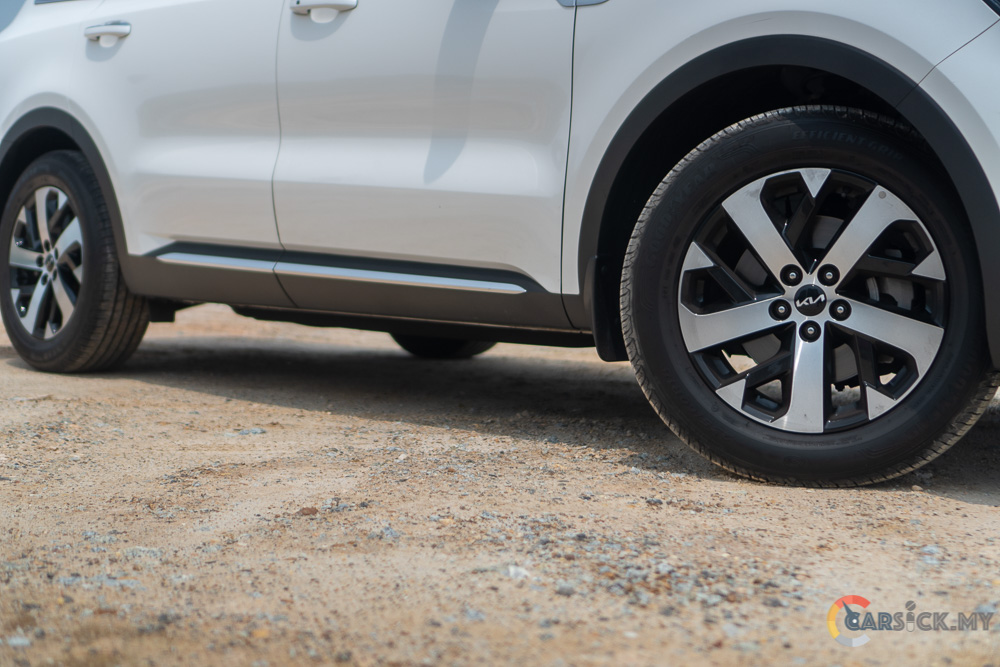
In terms of brakes, the base-spec Sorento proves to be adequately equipped. While I refrain from providing specific remarks about the braking system in this particular variant, I anticipate delving into its performance when evaluating the diesel model. Unexpectedly, Kia Malaysia has endowed the entry-level Kia Sorento with an extensive array of driver assistance systems. Although a few features have been omitted for this base model, considering it as a distinct variant, I must acknowledge that the available driver assistance features on this Sorento are remarkably comprehensive. 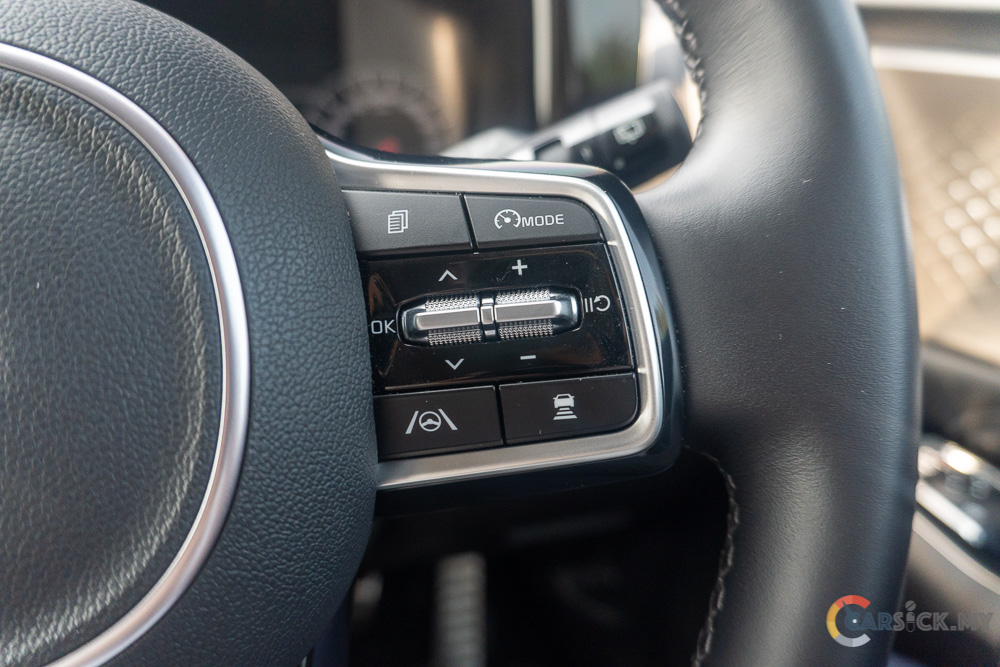
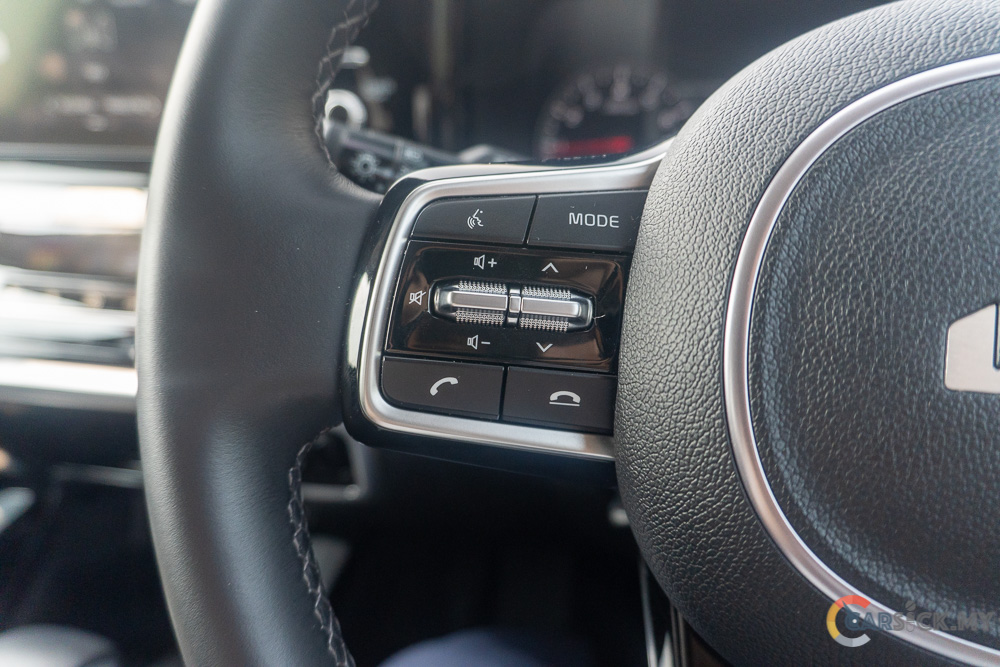
The Sorento is equipped with standard safety features, including six airbags, Anti-Lock Braking System (ABS), Electronic Brake-Force Distribution (EBD), Brake Assist (BA), Electronic Stability Control (ESC), Traction Control System (TCS), Auto Hold Function, and Rear Occupant Alert (ROA). Additionally, the Sorento boasts advanced safety technologies such as High Beam Assist (HBA), Blind-Spot Collision Warning (BCW), Blind-Spot Collision-Avoidance Assist (BCA), Rear Cross-Traffic Collision-Avoidance Assist (RCCA), Lane Keeping Assist (LKA), Driver Attention Warning (DAW), Forward Collision-Avoidance Assist (FCA), Lane Following Assist (LFA), Smart Cruise Control (SCC), Multi-Collision Brake Control (MCB), and Hill-start Assist Control (HAC) as part of its comprehensive suite of Driver Assistance Systems.
Priced at RM 211,498.40, the Sorento offers a substantial array of features for its cost. However, in a direct comparison with the Mazda CX-8, the entry-level Sorento falls short in terms of achieving a premium interior ambiance. Nevertheless, the Sorento remains an exceptionally comfortable and practical SUV. Its relative rarity on local roads ensures that owning one will make you distinctly noticeable among the ubiquitous SUVs in our community.
Check out full photo album here. 
